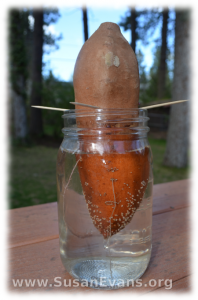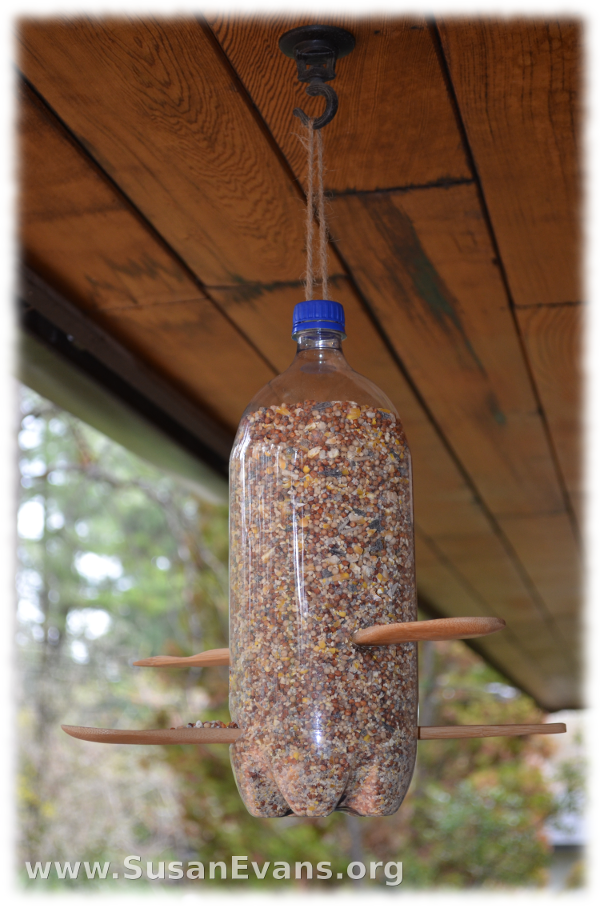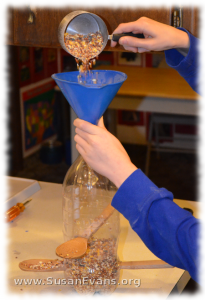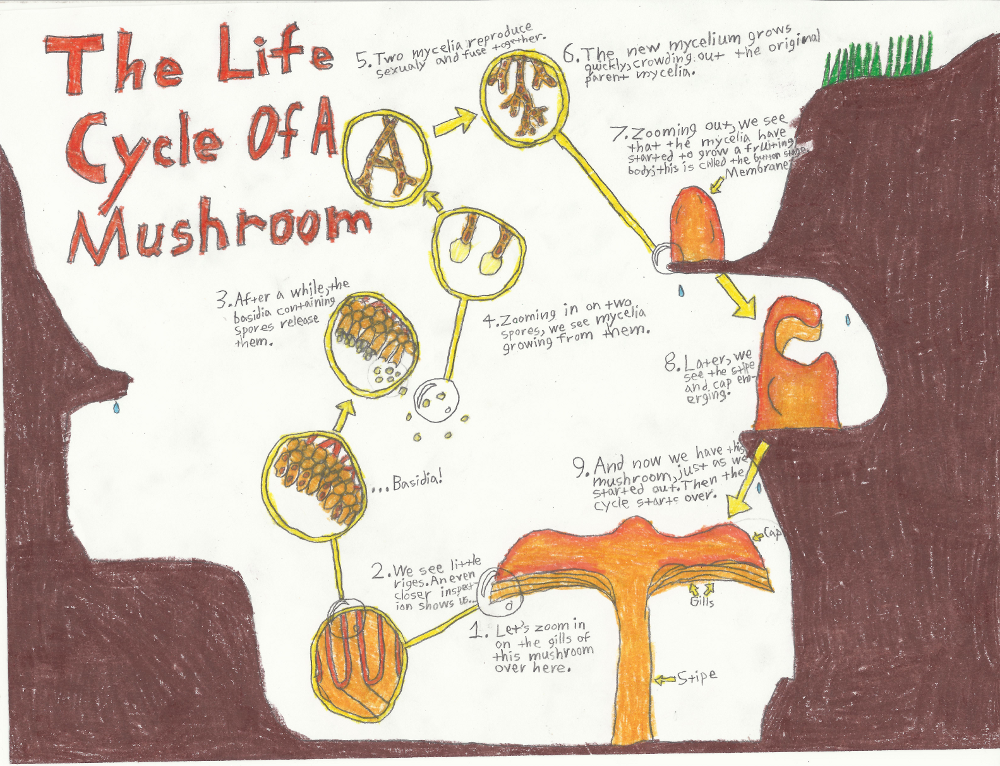Growing a sweet potato in water is a great way to see plant roots growing. You will need a sweet potato, a jar, water, and four toothpicks.
You will want to dip the sweet potato into the water about a third of the way down. Stab the toothpicks into the potato to keep it in place. Fill the jar with water. Now watch the roots grow right in front of your very eyes.
First you will see stubble, like a man who hasn’t shaved in a couple of days. This happens within the first few days. Then a few of the roots grow longer, branching out with root hairs. Since the jar is clear, you can see all this happening.
Other people buy expensive kits that have glass walls on either side so that you can see the roots of carrots and radishes growing, but the dirt is still in the way. With growing a sweet potato in water, you can see the root developing without any dirt in the way, and it doesn’t cost a lot.
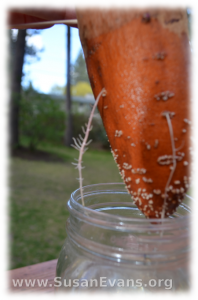 In biology this year, we studied the sections of a root, looking at the root under a microscope. The children were fascinated when they looked at prepared slides of monocot and dicot roots, which apparently have a different structure. Monocot roots have a circle shape in the middle, whereas dicots have an X shape.
In biology this year, we studied the sections of a root, looking at the root under a microscope. The children were fascinated when they looked at prepared slides of monocot and dicot roots, which apparently have a different structure. Monocot roots have a circle shape in the middle, whereas dicots have an X shape.
The main way to know if a plant is monocot or dicot is to look at its leaves. If the leaves are straight up and down like leaves of grass, it’s a monocot. If the leaf has veins branching out, it’s a dicot.
You can see all the other activities we did in biology this year in the Unit Study Treasure Vault.
Linked to Laugh and Learn
